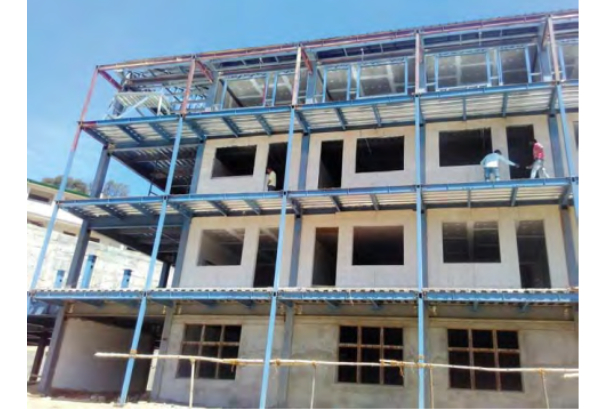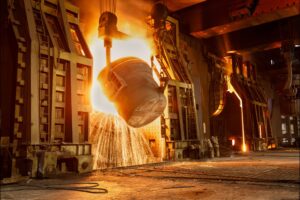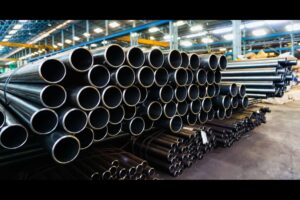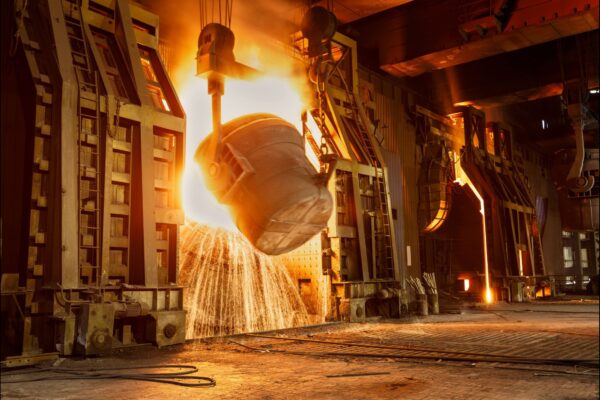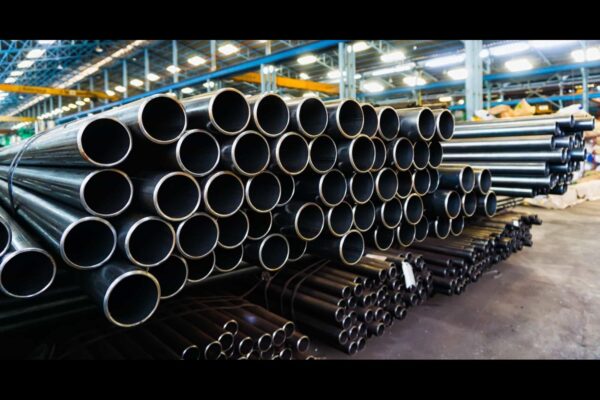Steel as a solution for India’s infrastructure: An overview
by Muneeb Mehraj, Assistant Manager (Civil & Structural), Institute for Steel Development and Growth (INSDAG)
By leveraging steel's versatility, strength, and sustainability, India can achieve its goals of enhanced connectivity, economic growth, and improved quality of life for its citizens. The future of India's infrastructure is bright, with steel at its core
India is embarking on an ambitious journey to bolster its infrastructure, and the budget for 2024-2025, presented by Finance Minister Nirmala Sitharaman on July 23, 2024, is a testament to this commitment. The government has earmarked a record Rs 11.11 trillion ($132.85 billion) for infrastructure development for the financial year ending March 2025. This monumental investment is poised to enhance connectivity, spur economic growth, and improve the quality of life for citizens across the nation.
The role of INSDAG
The Institute for Steel Development and Growth (INSDAG) is set to play a pivotal role in this transformative phase. With a keen focus on steel-intensive designs, upskilling manpower in steel fabrication, disseminating knowledge on steel construction, and fostering industry collaborations, INSDAG is gearing up to be a cornerstone in India's infrastructure development.
Key areas of focus
Urban housing under PM Awas Yojana-Urban 2.0
The PM Awas Yojana-Urban 2.0 (PMAY-U 2.0) is a flagship initiative by the Indian government aimed at addressing the housing needs of urban poor and middle-class families. With an investment of Rs. 10 lakh crore, including a central assistance of Rs.2.2 lakh crore over the next five years, the program aims to construct three crore additional houses in rural and urban areas. This ambitious plan includes provisions for affordable housing loans with interest subsidies and policies to reduce stamp duties for women homeowners. The government also focuses on rental housing for industrial workers through public-private partnerships (PPPs), promoting cities as growth hubs, and improving water supply and sanitation in 100 large cities​. As of March 20, 2023, 1,016 houses under PMAY(U) have already been constructed using this technology. Steel can be the preferred material in terms of Light Gauge Steel framing technology.
Expansion of India Post Payment Bank in the North East
India Post Payment Bank (IPPB) aims to enhance financial inclusion in the North East region of India, leveraging the extensive postal network. This initiative focuses on providing accessible banking services to remote and underserved areas, facilitating digital transactions, and offering financial literacy programs. More than 100 branches of India Post Payment Bank will be established in the North East. Steel can be the preferred material especially Cold Formed Steel which has high seismic and lateral strength for high seismic zones such as Northeast. According to Tata Steel Nest In, a company which specialises in LGSF houses, these structures are extremely robust and resistant to seismic disturbances as compared to traditional RCC structures. This technology can be particularly useful in these areas which have a high seismic activity. In fact, in the last 4 years Nest-In has clocked a CAGR of 50% in its order booking, thereby proving that there is an increasing demand for steel-based prefab solutions in India.
Rural development
With a provision of Rs 2.66 lakh crore for rural development, the Indian government's commitment to rural development is evident in its strategic investments and initiatives aimed at enhancing infrastructure and living standards in rural areas. The Union Budget 2024-25 allocates substantial funds for rural infrastructure, focusing on building and upgrading roads, improving access to clean water and sanitation and better infrastructure. India's finished steel production saw a significant increase to 127.2 million tonnes in 2022-23, reinforcing its role as a key player in infrastructure development. With India’s ambitious steel production target of reaching 300 million metric tonnes (MT) of crude steel capacity by 2030, steel can take quick pace in rural areas.
SVANidhi scheme
In a bid to support urban development and improve the livelihood of street vendors, the government has introduced a scheme to develop 100 weekly 'haats' or street food hubs each year over the next five years. These 'haats' will offer organised spaces for vendors to operate, ensuring better hygiene and business conditions. The SVANidhi scheme aims to support street vendors by developing 100 weekly 'haats' in select cities over the next five years. These 'haats' can utilise Standard Tubular Sections to create aesthetically pleasing and safe environments, blending seamlessly with the urban landscape. In fact, according to Tata Steel, the Indian tubes and pipes market is expected to grow by more than double in the next 7 years. The market has over 200 players and will be ready to propagate steel in this next infrastructure opportunity.
PM Surya Ghar Muft Bijli Yojana
The PM Surya Ghar Muft Bijli Yojana is a transformative initiative aimed at promoting solar energy in residential sectors. The 2024-25 budget has allocated significant resources to expand this program, aiming to reach millions of households across the country. This initiative will install rooftop solar plants to provide free electricity to 1 crore households. India’s solar capacity has increased by 23 times in the past 10 years — and is slated to jump to 292 GW of installed solar capacity by 2030. Steel rooftop supporting systems will be crucial in this endeavour, and our country’s collective focus on sustainability and green buildings will play a significant role in its success.
Bharat small reactors
The development of Bharat small reactors marks a significant advancement in India's nuclear energy capabilities. These small modular reactors are designed to provide a safer, more flexible, and cost-effective alternative to traditional large-scale nuclear reactors. The government has committed substantial funding in the 2024-25 budget to research and develop these reactors, which are expected to play a crucial role in meeting the country's growing energy demands. Steel plays a crucial role in the construction of these reactors, being used in various components such as the reactor vessel, containment structures, and cooling systems due to its high strength, durability, and resistance to extreme conditions. This ensures the safety and efficiency of the reactors, which are central to India’s clean energy transition and energy security goals​.
Conclusion
India's infrastructure development, backed by the significant budget allocation for 2024-2025, is set to witness unprecedented growth. INSDAG's expertise in steel construction will be instrumental in realizing these ambitious projects. By leveraging steel's versatility, strength, and sustainability, India can achieve its goals of enhanced connectivity, economic growth, and improved quality of life for its citizens. The future of India's infrastructure is bright, with steel at its core, ready to support the nation's ascent to new heights.

